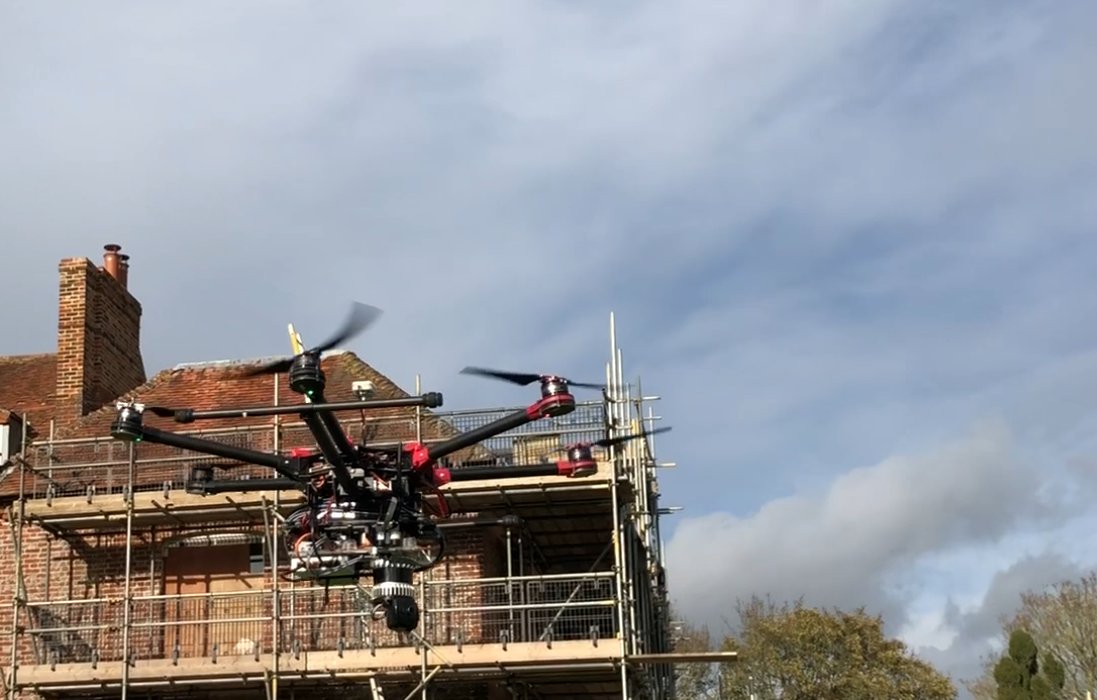
17 Jan The time is now for BVLOS
There is no doubt that achieving Beyond Visual Line of Sight (BVLOS) drone operations in UK airspace is one of the aviation industry’s toughest challenges. Regulators have done well to ensure flying remains one of the safest forms of mass transport and regulation to preserve aviation safety is as rigorous as it gets. Flying drones BVLOS in manned airspace within this context is, therefore, extremely difficult.
The time is now for BVLOS
Nevertheless, now is the time to attempt it. The UK has historically been one of the leading countries in the aviation industry worldwide and there is a clear mandate from the UK Government for this to persist. Unmanned flight and BVLOS are the next frontiers. The Government is encouraging the Civil Aviation Authority (CAA) to ensure that the UK stays competitive in terms of innovation breakthroughs so that UK aviation stays at the forefront and continues exporting its expertise worldwide. This is a time of enormous opportunity for the drone industry and we can feel the momentum building.
BVLOS in non-segregated UK airspace is our goal, and under the guidance of our partner, NATS (who run UK airspace and work closely with the Civil Aviation Authority), we are tackling the problem progressively. We’ve broken the challenge down into a roadmap that progresses stage-by-stage from what’s possible today, to the final objective. Every flight we undertake corresponds to a stage of the roadmap.
Addressing BVLOS progressively
By working in this way we aim to bring the regulator along with us on the journey, proving our technology and our approach along the way.
To stay within the regulator’s comfort zone we are:
i. Addressing ground and air risk by avoiding flying near aircraft and the general public.
Currently, we are flying very low level and in ‘atypical airspace’ which includes airspace where normal manned aircraft cannot go (e.g. airspace within 100 ft. of buildings or structures). This helps mitigate air risk as we avoid manned aircraft altogether. We mitigate ground risk by focusing on flying in controlled industrial environments, avoiding proximity to the general public. We will progressively move into wider environments (e.g. working with the emergency services) before venturing out into the open world when ready.
ii. Deploying an autonomous stack but under the control of a human pilot for extra safety.
Our technology enables the drone to fly itself but for the foreseeable future a human pilot will remain in control at all times. This mirrors what is happening in the autonomous vehicle world where safety drivers are used to drive autonomous vehicles around our road today.
iii. Progressively moving towards BVLOS while staying within the regulatory framework.
Because we fly in local areas, we can deploy under VLOS rules. Our aim is, in time, to move to Extended VLOS rules and then to BVLOS rules when the time is right.
By breaking the problem down in this way we aim to be the first business in the UK (possibly the world) to deploy BVLOS in non-segregated airspace. We will then harness the learnings and extend into public airspace and full autonomy.
A scalable approach from the outset
Our priority is to build a scalable model from the outset, so we are solving the hardest problems first. The technology we are deploying is advanced and capable, and designed to address fundamental problems and potential limitations now, such as GNSS Denial and communications failure, so they won’t derail us as we scale.
We are also choosing to work with regulators in the developed world rather than flying in locations in the developing world that present a lower barrier to entry from a regulatory perspective. Our view is if we can crack this in the UK, we can roll out anywhere.
Serving the service providers
In the long-term, we aren’t aiming to be a drone service provider; we’re aiming to be a technology provider to drone service providers. But in the short term, we need to try to control the whole stack and demonstrate value to the end customer – in the first instance in the construction, infrastructure and oil & gas markets. In parallel, we will be building relationships with some of the best drone service providers in the market with the ultimate aim of providing them with the technology that allows them to do their job cheaper, faster and better.
On-site trials start in February with Skanska, followed by trial inspections of infrastructure being built by engineering giant Atkins, and a test with the emergency services later in the year.
